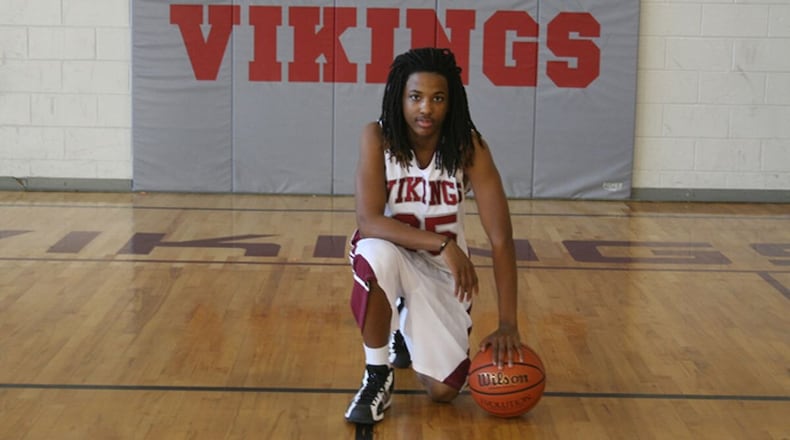After 14 months of poring over 17 boxes of investigative files from the FBI, a Georgia sheriff has closed his own investigation into the death of a Lowndes High School student, saying no foul play was found.
It’s been nearly a decade since Kendrick Johnson’s death in January 2013. His body was found in a rolled-up gym mat at the high school in Valdosta. Local and state investigators determined the 17-year-old’s death was accidental, while a three-year federal probe could not provide a definitive conclusion about how KJ, as he was known, died.
“When all this came about, there was a lot of controversy in the county,” Lowndes County Sheriff Ashley Paulk told The Atlanta Journal-Constitution.
Paulk, who is serving his sixth term as sheriff, wasn’t in the job when Johnson died.
“When I came back to be sheriff, a lot of people said that they felt like it needed looking into ‘cause there were a lot of questions unanswered,” he said.
He set out to obtain the federal investigative files in 2019, but his requests were denied until they told him in late 2020 that he could have them if he reopened the case.
“It was a vast amount of reading ... it took a lot of time,” he said.
While he didn’t have to interview many people, he did call some to clarify what they told investigators.
“I just wanted to know the truth — the public needed to know the truth, so I tried to break it down into a very simple format where people could understand. I tried to address all the rumors I’d heard,” Paulk said.
In the 16-page report — eight pages are photos and diagrams — Paulk separates the findings into nine categories, each addressing specific rumors or questions about the case.
“Any person who looks at this case objectively would know that it would be impossible to conceal any evidence due to the involvement of so many agencies and investigators,” he wrote of the allegation that people responsible for Johnson’s death were protected by law enforcement.
Since the beginning, Johnson’s parents have refused to accept that their son likely fell into the mat while reaching for a pair of sneakers. They insist he was killed by a small group of people, and in a 2015 wrongful death lawsuit they accused brothers Brian and Branden Bell and a friend. The lawsuit claimed the matter was covered up by Lowndes County Superintendent Wes Taylor and then-Sheriff Chris Prine, acting at the behest of the Bells’ father, former FBI agent Rick Bell.
That lawsuit was dismissed by Lowndes County Superior Court Senior Judge Richard Porter, who accused the Johnsons and their former lawyer, Chevene King, of fabricating evidence.
They made similar allegations in federal lawsuits that were dismissed after their attorney failed to meet several deadlines for filing paperwork.
Johnson’s parents and their family spokesperson Marcus Coleman did not return a request for comment Thursday.
On Facebook, his mother Jackie Johnson wrote, “Y’all please know we’re not worried. We already knew Paulk was gone lie. We’re still pushing justice for Kendrick Johnson. We stand on Kendrick was murdered and it’s already done.”
In his report, Paulk notes that the Bells did not cross paths with Kendrick Johnson the day he died. In fact, Branden Bell left the campus for a wrestling team trip to Macon about an hour before Johnson was last seen on security cameras entering the gym, something Paulk said is verifiable by motel check-in records and weigh-in data for the team.
Several people, including one of Johnson’s relatives, told federal investigators that it was common for students to store their shoes inside the mats, Paulk wrote.
Usually, students would tip the mats over to retrieve their belongings, he noted. But on that January day in 2013, more mats had been added to that corner of the gym over Christmas break. More mats in front of the mat in which Kendrick Johnson’s sneakers were stored meant he couldn’t simply tip it over and instead would have had to crawl down into it to retrieve the sneakers.
Regardless of his and previous findings, Paulk said he knows some people will always believe Kendrick Johnson died at the hands of another.
“There is not one piece of evidence in that whole file to indicate a homicide,” he said. “I hope people will take the time and, like I said, read it all.”
But, Paulk said, if there is anyone who can provide new, tangible evidence, “I will gladly review the evidence if that person provides the evidence and the source in writing.”
About the Author
The Latest
Featured


